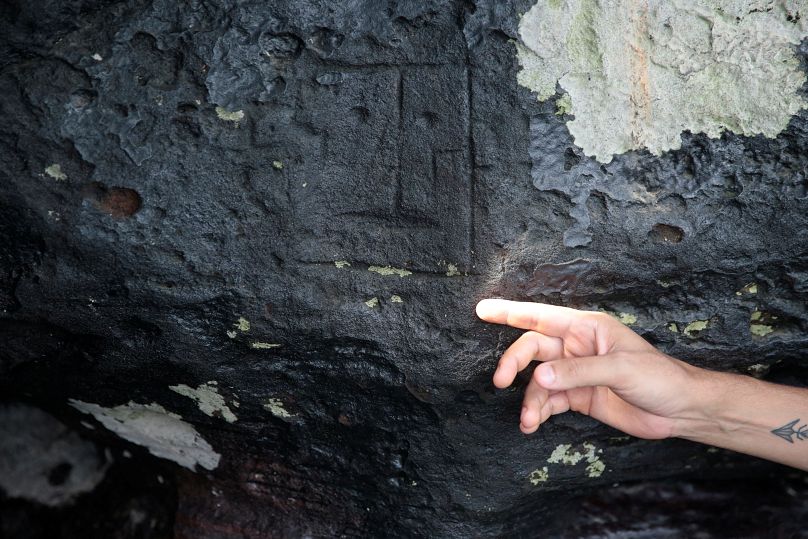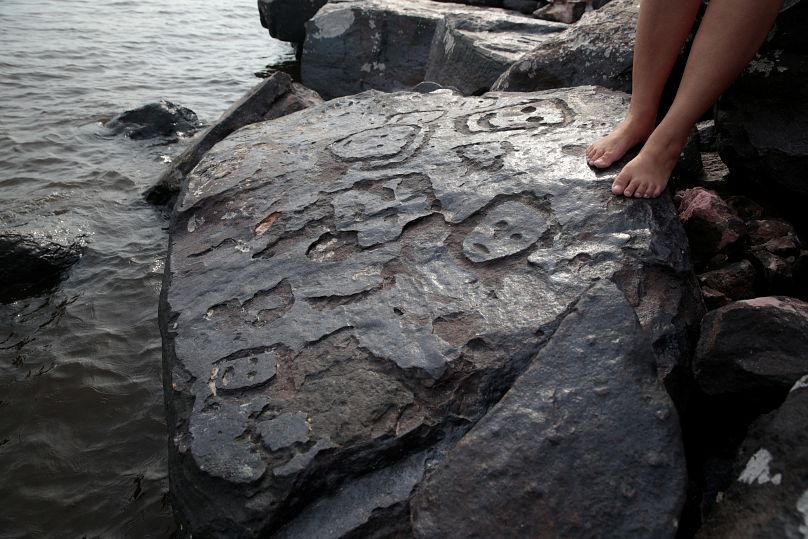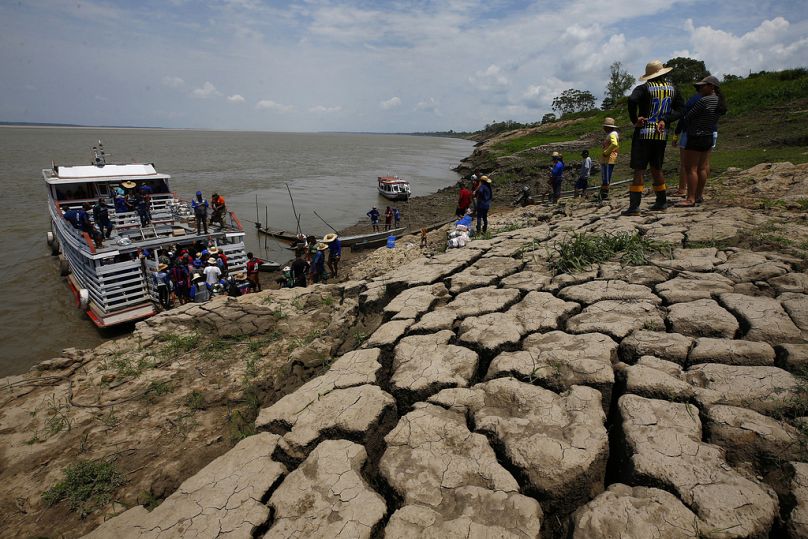Record low river levels led to the strange discovery in Brazil, where public authorities are delivering food to isolated residents.
Severe drought in Brazil has caused river levels to plummet, revealing rock carvings of human faces made up to 2,000 years ago.
It’s a discovery that observers are bound to have mixed feelings about. Like the hunger stones exposed during Europe’s drought last summer - engraved 'If you see me, then weep' - these relics would not be visible without a devastating dry spell.
Climate change and El Niño have conspired to cause Amazon River levels in northern Brazil to drop to record lows, cutting off some communities and killing wildlife.
The rocky point where the ancient faces were discovered is called Ponto das Lajes, or Place of Slabs. It’s on the north shore of the Amazon near where the Rio Negro and Solimoes rivers join, by the city of Manaus.
Some of the etchings, which also include animals, had been spotted back in 2010. But this year's drought is more acute, with the Rio Negro dropping 15 metres since July, exposing vast expanses of rocks and sand where there had been no beaches.
Last week, the Negro River dropped as low as 13.5 metres in Manaus’s port - the lowest level since official records began 121 years ago.
What do we know about the Brazil rock faces?
There is now a greater variety of petroglyphs visible that will help researchers establish their origins, archaeologist Jaime de Santana Oliveira said on Monday.
One area shows smooth grooves in the rock thought to be where Indigenous inhabitants once sharpened their arrows and spears long before Europeans arrived.
"The engravings are prehistoric, or precolonial. We cannot date them exactly, but based on evidence of human occupation of the area, we believe they are about 1,000 to 2,000 years old," Oliveira said in an interview.
"This time we found not just more carvings but the sculpture of a human face cut into the rock," added Oliveira, who works for the National Historic and Artistic Heritage Institute (IPHAN) that oversees the preservation of historic sites.
Next to the world’s most voluminous river, people queue for water
As the Amazon drought rages on, Brazil’s current inhabitants are in dire need of help.
Public authorities are scrambling to deliver food and water to thousands of isolated communities throughout a vast and roadless territory, where boats are the only means of transportation.
Across Amazonas state, 59 out of its 62 municipalities are under state of emergency, impacting 633,000 people.
One of the most impacted cities is Careiro da Varzea, near Manaus. On Tuesday, the municipality distributed emergency kits using an improvised barge originally designed to transport cattle.
Residents had to walk long distances through former riverbeds turned into endless sand banks and mud to reach the barge. They received a basic food package and 20 litres of water - enough for just a few days but a heavy burden to carry under the scorching heat.
“I will have to carry the food package on my back for half an hour,” Moisés Batista de Souza, a small farmer from Sao Lazaro community, told the Associated Press news agency.
He said the biggest problem is getting drinkable water. To reach the closest source demands a long walk from his house.














